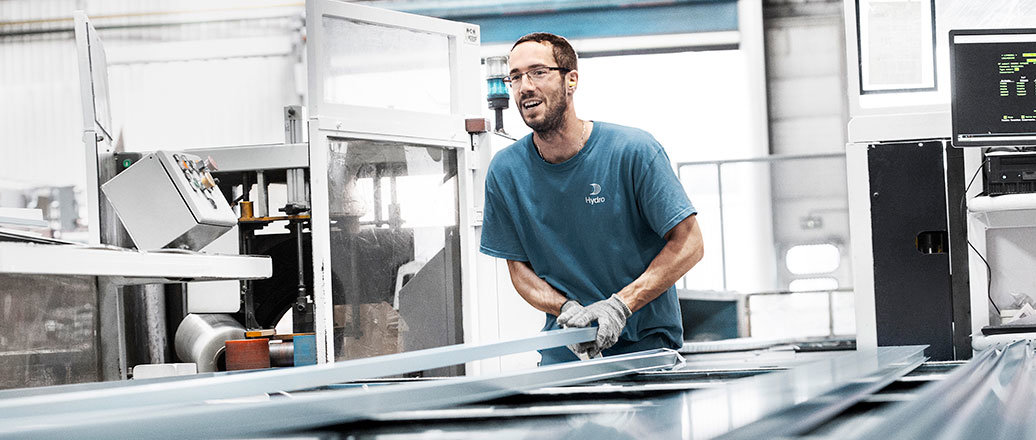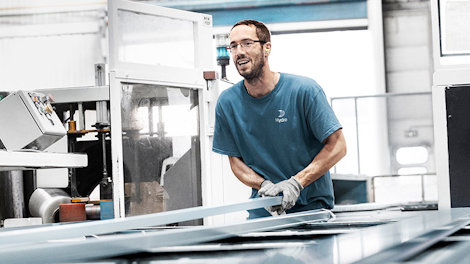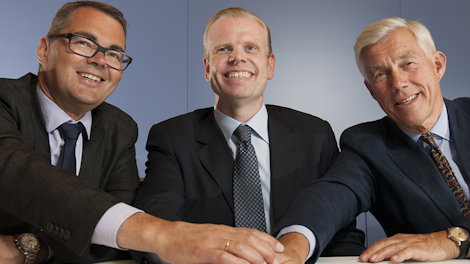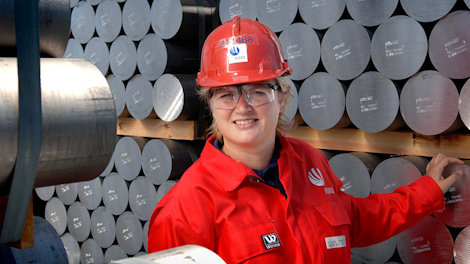The journey from Sapa to Hydro was a short one for many of the 23,000 employees in the business unit now called Extruded Solutions. From 2013 to October 2017, the extruding business originally consisted of the Swedish company Sapa, and Hydro's former Extrusion division. Sapa and Hydro were the two international leaders within aluminium profiles and systems for many years. With over 100 manufacturing facilities serving regional markets in all parts of the world, the new Hydro business unit will be able to provide customers with even better service, with even greater emphasis on product development and even greener solutions, integrated into the world's leading aluminium environment.
Hydro's history goes back to 1905, when the company started building what was Europe's largest hydroelectric power station in Telemark. The purpose was the first successful production of nitrogen fertilizer to feed a growing population. More than 100 years later, the same hydroelectric power is used for the production of aluminium, including at the world's most energy efficient pilot plant for aluminium production at Karmøy, which came online in 2017.
Full concentration
After the Norwegian conglomerate Norsk Hydro ASA listed the original fertilizer business (Yara) on the stock exchange in 2004, and merged its oil operations with Statoil in 2007, aluminium has been the sole focus. Hydro strengthened its presence in Europe with the takeover of the German aluminium company VAW in 2002, and went on to develop a strong position within rolled products, including packaging, construction and transportation. In recent years, the company has concentrated heavily on the manufacture of aluminium plates and other light, safe and energy-efficient solutions for the automotive industry.
The company's position as an integrated aluminium producer was further strengthened through the takeover of mining company Vale's aluminium business in Brazil in 2011. This acquisition secured Hydro long-term access to the key raw material bauxite, majority ownership of the huge Alunorte alumina refinery and a 50% interest in the Albras aluminium plant. Hydro is now well-integrated into the value chain from bauxite mining to the tailoring of complete aluminium solutions for customers all around the world.
Integrated since 1917
Integration is nothing new in the aluminium industry. The company's oldest aluminium plant, Hydro Høyanger, was established as early as 1915 by Sigurd Kloumann, who had also been responsible for the development of Hydro's first two power plants in Telemark, Norway in 1905. At the time, he was only 25 years old. Kloumann thought big, not necessarily in terms of volume, but in the value chain. He wanted the company to be integrated into the value chain from the extraction of bauxite to the manufacture of finished products, resulting in the first integrated aluminium company in Norwegian ownership. Investment in further processing was channeled through Nordic Aluminiumindustri, now Hydro's rolling mill in Holmestrand. This was Norway's leading environment for further refinement of aluminium for many years, with the emphasis on tailoring for customers within a variety of different industries.
Long lines
When Hydro made its first steps into aluminium 50 years ago, it was with the construction of an integrated aluminium-environment at Karmøy, including aluminium plants, rolling mills and extruders. The start of Karmøy in 1967 was demanding, but nevertheless formed the basis for the development of a large further processing system with the emphasis on aluminium profiles.
The same year that Hydro decided to go into aluminium and began developing into a conglomerate in 1963, two local contractors established an extrusion plant in Vetlanda in Sweden. This was the start of Sapa, which grew strongly and for many years was Hydro's largest competitor in the production of aluminium profiles.
Opdateret: 13. april 2021




